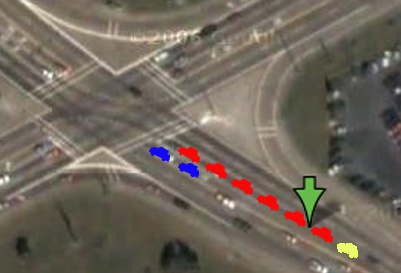It could be much worse, I’m sure, but this problem is getting on my nerves.
 This is only one of many over the last couple of weeks, and I’ve logged most of them.
This is only one of many over the last couple of weeks, and I’ve logged most of them.
Contacting Dell Tech Support via e-mail isn’t the fastest way to resolve a problem, but it’s the way that wastes the least amount of my time, allowing me to send the relevant information in writing. And, since it’s not to the point where it’s more than an inconvenience, not wasting my time takes priority over venting frustration to a real person.
Actually, it got escalated to a fairly high level support technician — and one who writes as though English is actually his native language — by the second exchange. That’s pretty darn fine.
The latest has narrowed it down to one of four potential causes:
1) a corrupt operating system;
2) a virus or malware;
3) bad memory;
4) bad hard drive.
Based on this Microsoft Support Bulletin, option 1 looks like a good guess. So, downloading the hotfix should help, except that it doesn’t appear to be available for download; the link points to a phone number for Microsoft to have them send it to me. Calling Microsoft only took me to a message directing me to call my hardware manufacturer.
In programming, this is known as a circular reference, and tends to be fatal. If only it were so in customer service. So, I’ve replied to the Dell tech’s e-mail, asking him to get the hotfix for me.
Having earlier seen a ZDNet warning that a TrendMicro flaw could cause the Blue Screen of Death, I’ve manually updated my virus patterns, run a full system scan, then gone to Symantec to run a second, online scan as a backstop. Both came up completely clean, but I realize that there are new bugs, or variations of old bugs, that aren’t yet in the antivirus patterns. It could be a bug… I have to keep checking all possibilities.
I don’t have any of the usual indications that there’s a memory or HDD problem, so although the Dell rep offered to send out new memory and a new HDD, I’d rather rule out the other two first.
For the hardcore geekiest of you out there, a sampling of the error codes is as follows:
STOP 0x0000007A (0xC0546B08, 0xC0000185,0xA8D61C74,0x07DC0860)
cdfs.sys – Address A8D61C74 base at A8D5E00, DateStamp 41107eb1
—–
STOP 0x0000007A (0xE1D408F8, 0xC0000185, 0xBF916582, 0x36234860)
win32k.sys – Address BF916582 base at BF800000, DateStamp 43446a58
—–
STOP: 0x0000007A (0xC07BAE90, 0xC0000185, 0xF75D2000, 0x26662860)
mountmgr.sys – Address F75D2000 base at F75CD000 Datestamp 41107b05
—–
STOP: 0x00000077 (0xC0000185, 0xC0000185, 0x00000000, 0x00ABE000)
—–
STOP: 0x000000F4 (0x00000003, 0x8628E8E8, Ox8628EA5C, 0x805D117A)
—–
STOP: 0x000000F4 (0x00000003, 0x86049340, Ox860494B4, 0x805D117A)
—–
STOP: 0x000000F4 (0x00000003, 0x861A3368, Ox861A34DC, 0x805D117A)
—–
KERNEL_DATA_INPAGE_ERROR
STOP: 0X0000007A (OxC07B9C48, 0xC0000185, 0xF7389DAD, 0x2BD50860)
ntfs.sys – Address F7389DAD base at F7334000 Datestamp 41107eea
# 0xC0000185 (which appears several times) signals a STATUS_IO_DEVICE_ERROR, caused by improper termination or defective cabling on SCSI devices, or two devices attempting to use the same IRQ. Well, this lappy doesn’t have any SCSI devices… so that’s a bit baffling.
Hope that hotfix arrives soon.
 Okay, the picture pretty much says it. The City’s said it much more precisely, but the deal is that a Super Target and associated stores could be reasonably expected to generate about $60M in sales in Oak Ridge.
Okay, the picture pretty much says it. The City’s said it much more precisely, but the deal is that a Super Target and associated stores could be reasonably expected to generate about $60M in sales in Oak Ridge.
 Since Fat Tuesday approaches and we really can’t be hanging out late on a weeknight, we kinda-sorta had a taste of Mardi Gras last night.
Since Fat Tuesday approaches and we really can’t be hanging out late on a weeknight, we kinda-sorta had a taste of Mardi Gras last night. as the mudbugs contemplated an escape. They were unsuccessful, and promptly devoured.
as the mudbugs contemplated an escape. They were unsuccessful, and promptly devoured. This morning brought a peaceful scene, which made for a lovely drive to an uncrowded church service.
This morning brought a peaceful scene, which made for a lovely drive to an uncrowded church service. This is only one of many over the last couple of weeks, and I’ve logged most of them.
This is only one of many over the last couple of weeks, and I’ve logged most of them.
 Where Illinois Avenue meets the Turnpike, there are TWO left-turn lanes. Those needing to turn left can only do so during a green arrow on the traffic light.
Where Illinois Avenue meets the Turnpike, there are TWO left-turn lanes. Those needing to turn left can only do so during a green arrow on the traffic light.